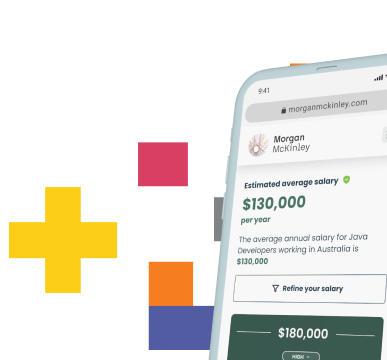Skill Gap Analysis: Tools, Techniques, and the Path Forward for Employers

Skill gaps are a pervasive and increasingly urgent concern for organisations worldwide. They reflect the disparity between the skills employees currently possess and those required to perform their roles effectively and to support strategic business objectives. Left unaddressed, these gaps can slow down technological adoption and innovation as well as compromise overall organisational performance and competitiveness.
However, the concept of a skill gap is both nuanced and multidimensional, often lacking a universally accepted definition. Terms such as skill mismatches, skill shortages, and skill gaps are frequently used interchangeably, creating confusion and making accurate skill gap analysis a complex task. These gaps are shaped by a complex interplay of factors: employee expectations, employer needs, educational curricula, and macro forces such as digital transformation, globalisation, and demographic shifts.
In this article, we explore a range of tools and techniques available for diagnosing and measuring skill gaps, and consider how organisations can move towards more integrated, accurate assessments.
Tools and Techniques for Measuring Skill Gaps
Conducting a successful skill gap analysis starts with a clear understanding of the skills required for specific job roles and how they compare to the current capabilities of your workforce. Accurately identifying skill gaps ensures that organisations can design focused interventions, such as training and development programmes, to bridge those gaps effectively.
While several methods exist for measuring skill levels and identifying shortages, many organisations still lack a standardised, data-driven approach. Below are some of the most widely used tools and techniques to diagnose skill mismatches and skill shortages in the workplace.
1. Surveys and Self-Assessments
Surveys are among the most common methods for conducting skill gap analysis. These typically involve:
- Employer Assessments: Managers rate the importance of specific skills and evaluate employee performance against them.
- Employee Self-Assessments: Staff members evaluate their capabilities in relation to job requirements.
While easy to implement, surveys can be subjective. Employees may overestimate or underestimate their abilities, and employers may be influenced by recent performance rather than long-term skill trends. Despite their limitations, surveys offer a useful starting point for gauging perceived skill gaps across an organisation.
2. Interviews and Focus Groups
Qualitative techniques such as one-on-one interviews and structured focus groups provide rich, contextual insights. These methods allow organisations to:
- Explore employee and manager perceptions of skill needs
- Identify hidden or emerging skill mismatches
- Understand the reasons behind perceived skill shortages
This qualitative feedback is especially valuable when used alongside quantitative data, helping to paint a more comprehensive picture of the workforce’s capabilities.
3. Data-Driven Skill Analysis
Advanced skill gap analysis increasingly relies on the power of data. Key sources include:
- Professional Databases: Tools like ESCO (European Skills, Competences, Qualifications and Occupations), ISCO (International Standard Classification of Occupations), and EMSI provide structured skill taxonomies that help define job profiles and benchmark workforce capabilities.
- Labour Market Analytics: Analysing industry and regional data highlights macro-level skill shortages and demand trends.
- Education and Training Data: Reviewing course content and qualification frameworks helps evaluate whether formal education systems are preparing workers for in-demand roles.
Data analysis enables organisations to pinpoint skill mismatches with greater objectivity and tailor their upskilling efforts accordingly.
4. Competency Assessments and Skill Frameworks: Foundations for Effective Skill Gap Analysis
Accurate skill gap analysis relies on two key components: targeted competency assessments and clearly defined skill frameworks.
Competency assessments directly evaluate an employee’s capabilities through:
- Practical tests and role-based tasks
- Peer and manager feedback
- Structured performance evaluations
These tools provide a precise view of individual skill gaps, making them especially valuable for personal development, succession planning, and role readiness.
To ensure consistency, these assessments should be anchored in a well-developed skill framework, a structured model outlining the core competencies required for success in each role. Skill frameworks support:
- Standardised job evaluations
- Alignment between training efforts and business needs
- Ongoing tracking of workforce capability
Together, assessments and frameworks form the backbone of a more strategic, consistent, and actionable approach to identifying and addressing skill shortages and skill mismatches across the organisation.
Toward a More Holistic Approach
Despite the availability of various tools, many organisations still take a fragmented approach to measuring skill gaps. The most effective strategies integrate multiple data sources and perspectives, combining quantitative metrics, qualitative insights, and real-time labour market intelligence.
Such a holistic approach not only improves accuracy but also ensures that interventions are aligned with actual business needs, helping organisations respond to evolving challenges with agility and confidence.
Using Data Analytics and AI to Detect Organisational Skill Shortages
While the direct application of AI to diagnose internal workforce capability gaps is still evolving, the use of data analytics, big data, and emerging technologies is revolutionising how we understand labour market trends and plan for future skill demands.
Labour market data is now a foundational asset for skills strategy. Organisations increasingly turn to structured databases such as ESCO (European Skills, Competences, Qualifications and Occupations), ISCO (International Standard Classification of Occupations), and EMSI to benchmark role requirements and map them to current workforce capabilities.
These tools provide structured frameworks that help companies understand the broader context of skills in demand across industries and regions. In parallel, national and regional labour market intelligence enables businesses to spot trends in employment, identify high-demand roles, and proactively address areas of skill shortage.
A particularly promising advancement is the use of big data analytics to assess real-time job vacancy information. By analysing patterns in online job advertisements, companies can detect granular trends in skill demand at both the occupational and sectoral levels. This allows organisations to not only benchmark themselves against industry standards but also to anticipate shifts in talent needs, thereby addressing potential skill mismatches before they affect operations.
Artificial intelligence, especially machine learning and natural language processing (NLP), is being explored for its ability to analyse massive datasets with speed and accuracy. These technologies can extract meaningful insights from both sides of the labour equation: the supply side (including online CVs, digital learning records, and training content) and the demand side (job descriptions, internal job postings, and hiring trends). This dual analysis supports more precise and scalable skill gap analysis, offering organisations a clearer picture of where they stand and what future capabilities they will require.
Emerging Tools and Future Possibilities
As data analytics and AI capabilities mature, a number of emerging tools are beginning to redefine how organisations measure and respond to skill needs:
- Data-Driven Evaluation Tools: Platforms that offer accessible, user-friendly ways to interpret workforce data and identify capability gaps.
- Skill Visualisation Dashboards: Interactive systems that map current employee skills against projected future requirements, aiding in decision-making.
- AI-Powered Recommender Systems: Still in early development, these systems could eventually recommend tailored learning paths or candidate selections based on detected skill shortages and organisational needs.
Although these technologies are currently more prevalent in labour market analysis at the macro level, their implications for internal workforce planning are significant. By integrating AI and analytics into their talent strategies, organisations can shift from reactive recruitment to proactive capability building, aligning their people strategies with long-term business goals and evolving skill demands.
Benchmarking Skills: How to Know Where You Stand in Your Industry
Understanding where your organisation stands in relation to industry standards is a critical component of any practical skill gap analysis. Benchmarking allows organisations to identify skill gaps, anticipate future shortages, and align workforce development with broader sector trends. This external lens complements internal assessments and helps drive strategic workforce planning.
It enables HR leaders and decision-makers to evaluate whether their talent pool aligns with market expectations and whether they are keeping pace with technological change, regulation, and evolving customer demands.
Key benefits include:
- Spotting industry-wide skill mismatches before they become internal challenges
- Aligning recruitment and L&D with verified market demands
- Prioritising training investment in high-impact skill areas
How the Morgan McKinley Salary Guide Supports Skill Benchmarking
The Morgan McKinley Salary Guide is more than a compensation reference; it’s a strategic tool that helps organisations benchmark both skills and salary trends across roles and geographies. Informed by proprietary data and recruiter insights, the guide highlights:
- Top in-demand roles by sector
- Evolving skillsets driving value in the market
- Shifts in employer expectations
- Candidate motivators such as pay, flexibility, and career development
By using the Morgan McKinley Workplace Trends Report for 2025, in conjunction with internal role audits, businesses can:
- Identify gaps between existing capabilities and high-demand market skills
- Benchmark pay against industry standards to ensure they remain competitive
- Adjust job scopes or upskilling plans to match changing talent trends
- Support more strategic talent acquisition and retention efforts
For example, suppose data from the Salary Guide shows increasing demand and salaries for cloud infrastructure roles or ESG expertise. In that case, it signals where your organisation may need to invest, either by recruiting externally or developing current employees.
Additional Sources of Benchmarking Data
To build a well-rounded view, organisations can pair insights from the Morgan McKinley Salary Guide with:
- Sector-Specific Studies
Conducted in industries like tech, finance, healthcare, and construction, they reveal persistent recruitment challenges and skills in demand. - National Employer Surveys
Such as those from the UK, Canada, or Australia, which gather data on hard-to-fill roles and emerging talent shortages. - Professional Skill Databases
ESCO (Europe) and ISCO (global) define skills and competencies for thousands of occupations, which is ideal for mapping internal roles to external expectations. - National Taxonomies
Tools like O*NET (US), the UK Skills Taxonomy, and Canada’s Competency Framework offer localised benchmarks aligned with national labour market needs. - Global Benchmarking Initiatives
Resources from the OECD, ILO, and World Economic Forum offer macro-level trends in labour demand, enabling multinational organisations to benchmark globally.
Using Benchmarking to Drive Strategy
To make the most of benchmarking efforts:
- Compare internal job specs and competencies with those outlined in recognised taxonomies and Salary Guide data
- Identify the delta between what’s needed and what’s present in your workforce
- Use insights to refine hiring strategies, prioritise training, and develop future-focused talent pipelines
Benchmarking doesn’t just highlight where you may be falling short, it helps define where your organisation can grow and lead. When integrated with internal data and supported by tools like the Morgan McKinley Salary Guide, it ensures your workforce is prepared for both current demands and future shifts in the industry.
Conclusion: A Multi-Faceted Approach for a Multi-Dimensional Problem
Diagnosing skill gaps is both an art and a science. While individual tools like surveys or job market data can offer value, no single method is sufficient. Instead, organisations should strive for a multi-method approach that triangulates data from internal assessments, industry benchmarks, stakeholder input, and emerging technologies.
Doing so will not only help them adapt to today's challenges but also prepare for the skill demands of tomorrow. In an era of transformation, understanding and closing skill gaps isn’t just an HR task, it's a strategic imperative for lasting success.














